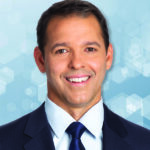Early in my career, I traded for two multimillionaire hedge fund guys — let’s call them “Nate” and “Chad.”
These two men were instrumental in showing me how to make money in the market. But they couldn’t have been more different in their approach.
Nate was, in a word, neurotic. He frequently pulled all-nighters to consume reams of global news stories… Using them to guide hair-trigger impulses on leveraged currency trades.
Nate’s wins were mind-blowingly big, but rare. Losses were common — some small, some large. His account swung up and down like a two-year-old’s mood, and it was impossible for him to explain his method … because it was largely based on gut feel and a “sixth sense.”
Chad, on the other hand, probably spent less than an hour a day in front of his charts. He spent most of his time lounging in a hammock, head buried in a book.
That’s because Chad ignored the news and the ticks on the screen. He programmed his computer to screen for precise conditions and alert him when those conditions were met. Only then would he pop up, place a trade or two … and then get back to reading.
Chad mostly batted singles with this method. But he rarely lost, and his account climbed steadily up. Not to mention, his mental health was up there with the Buddha.
It didn’t take long for me to decide that I aligned more with Chad than Nate. And since then, I’ve become something of an expert on systematic strategies.
Here’s why I tell you all this…
Two days ago, I invited everyone at Banyan Hill to learn about what may well be my “magnum opus” systematic trading strategy.
Testing shows it has the power to turn a starting stake of $5,000 in 1999 into well over $6 million today. For comparison, putting $5,000 into the S&P 500 instead would reward you with a yawn-inducing $18,000. (That’s a 300-to-1 outperformance.)
Understand that this is without using options, futures or any other leveraged instrument. All you’re trading are shares of stocks.
And the kicker? This strategy trades far less than even Chad did. Only once a month — taking no more than about 10 minutes.
Let me tell you all about this brand-new way of investing … and how you can get your hands on it.
A Relay Race of Perfect Stocks
The core of this strategy is a commitment to investing ONLY in “perfect” stocks.
Perfect stocks, in my view, possess three critical traits:
- Quality — highly profitable businesses, light on debt and generating tons of cash.
- Value — undervalued relative to their peers and the worth of their underlying business.
- Momentum — stocks that are already going up … and going up fast!
Stocks that carry all three traits are rare. And even when you do find them, they typically don’t maintain all three for years on end.
Nonetheless, this is what makes a perfect stock. And this strategy demands we only invest in perfect stocks.
But there’s no reason we have to hold these perfect stocks forever … or even any longer than one month. And this is what’s so new about this way of investing.
Think of it like this…
Imagine you have two teams competing in a 26-mile marathon. Team #1 consists of just one runner, while Team #2 is made up of 26 runners who pass the baton after they run a single mile. Which team do you bet on?
Team #2, of course — the relay team. Each runner can run at max speed for just one mile, then hand off the race to the next runner, who can do the same. Meanwhile, the lone runner on Team #1 keeps a slow pace … trying to simply make it to the end.
This is essentially how my new strategy works. Each “runner” on the relay team is a portfolio of high-quality, high-momentum stocks … energized and poised for a high-speed sprint over the next “mile” … or in our case, month.
After that month, if my system indicates it’s losing steam, we can simply pass the baton to a “fresh” group of stocks that are ready to run.
With this unique approach, we don’t need to find long-term stock market winners. We just consistently buy the 10 strongest stocks of today … and ride their rallies one month at a time.
And this is possible with only a marginal bit of work each month…
10 Minutes a Month to Trounce the Market
Using this new strategy is as simple as it gets.
Every four weeks, I’ll recommend my subscribers buy the 10 stocks currently rated highest by the model. Then, once a month, we’ll “rebalance” the portfolio.
That could mean selling a few of the stocks we held the previous month, and replacing them with new ones. It could also mean completely replacing the whole portfolio … or doing nothing at all.
No matter what, we’ll always own 10 stocks. And we’ll only make trades once a month.
The stock market tends to go higher most of the time and over the long run… and momentum works best on the upside. So most of the time, we’ll be 100% invested.
But my model does have a systematic “hedge” position, which kicks in when the broader market’s trend begins to turn down.
Historically, that hedge helped this strategy model be less than half as volatile as a buy-and-hold strategy on the S&P 500. That’s pretty impressive, considering it also beat the S&P 300-to-1!
Like I said, since 1999, this strategy has built up a $5,000 grubstake into well over $6 million.
Here’s what that looks like in percentage terms, with the S&P 500 to compare:
I know this looks like we made an error, but we didn’t. That line crawling along the bottom (in red) is the return of the S&P 500 over the last 24 years. And the top line (in green) is my new system.
This strategy doesn’t just beat the market. Frankly, it embarrasses the market.
The chart above caused a pretty big stir when I first shared it with the Banyan Hill team. Several said they’re dying to start trading it in their own portfolio … including the CEO, who’s already put 100% of his IRA into it.
Of course, now that it’s been battletested, we want to make it available to you…
So let’s talk about that.
The Power of Infinite Momentum
Right now, you might be thinking this sounds impossible…
Wall Street pays analysts millions of dollars to spend every waking minute thinking about the markets. Hedge fund billionaires like Ray Dalio, tech soothsayers like Cathie Wood and the Oracle of Omaha himself devote their entire lives to it.
How could it be possible to spend just 10 minutes a month “refreshing” a portfolio of only 10 stocks … and beat the pants off them?
It flies in the face of everything everyone says about investing … that “slow and steady wins the race.”
But 24 years of data don’t lie.
This is a brand-new way of looking at the market — using an optimized portfolio, holding only the highest-quality, fastest-moving stocks to produce accelerated returns.
I’d like to invite you to be among the first to start using this strategy for yourself at an event I’m holding on September 19 at 1 p.m. ET called the Infinite Momentum Summit.
There you’ll learn everything there is to know about this brand-new strategy … and how you can access it for the lowest price we’ll ever ask.
As soon as a sign-up link is available, I’ll send it your way. (And I’d suggest using it ASAP — we’re planning a special discount for those who secure access to the event early.)
Until then, stay tuned to The Banyan Edge and the Stock Power Daily newsletter from my research firm Money & Markets. We’ll be featuring a ton of insights about this system and momentum-based investing in the coming weeks.
To good profits,
 Adam O’Dell
Adam O’Dell
Chief Investment Strategist, Money & Markets
How the Endowment Affect Can Wreck Your Portfolio
I’ve had behavioral finance on my mind ever since I read Michael Lewis’ The Undoing Project a few weeks ago.
Undoing is the story of how the Israeli psychologists Daniel Kahneman and Nathan Tversky essentially blew up the economics profession. They proved that one of its core assumptions — that man is rational — simply isn’t true. Homo economicus is a myth.
It’s not that humans are crazy, or wildly irrational. But our minds aren’t evolved to properly calculate probabilities and then to act on them, so we tend to systematically make errors.
One of those errors identified by Kahneman and Tversky is the “endowment effect.”
The endowment effect is our tendency to put a higher value on something we already own than on the same object if you didn’t own it.
That may sound a bit complex, but here’s an example:
I tend to live pretty spartanly and make a real effort to not accumulate crap I don’t need. And yet the last time I moved, I noticed that boxes I never opened from the previous move somehow made it to the new house.
I paid someone to move a box of stuff I don’t really want, and should have never bought to begin with. It would have been more economical to dump the boxes or donate the contents to Goodwill.
The endowment effect got me. I assigned value to junk because it was “mine.” If the same box of junk was offered for sale, I wouldn’t have even considered spending a penny on it. And yet I wasted perfectly good money having it moved. I would argue that Public Storage, and the entire self-storage industry exists precisely because of the endowment effect.
At any rate, this phenomenon is mostly harmless. Few lives have been destroyed by holding on to a box of tools you haven’t used in 20 years, and will likely never use again. And the effect likely comes from a basic human survival instinct going back to our caveman ancestors. You place value on your family and your children because they are yours.
But the endowment effect is an absolute disaster when it influences your trading and investment.
It’s what causes investors to hold on to losing positions, and turn would-be small losses into big ones. No one would ever ride a losing position all the way to zero if it weren’t for the endowment effect.
How to Fight the Effect
Remember, we’re fighting our own cerebral hardwiring here. It’s hard to outthink a problem when your brain itself is the problem.
We can protect ourselves by taking our brains out of the equation and relying on rules, such as stop losses.
You decide before getting into a trade or investment under what conditions you would sell … and then you stick to your rules. Ian King, for example, partners with Tradesmiths and implements its TradeStops investing tool in his Strategic Fortunes service.
Adam O’Dell has also always been a rules-based trader. His Green Zone Power Ratings system is a prime example.
This doesn’t mean that 100% of his trades are profitable or that nothing ever goes wrong. But when trades don’t work out as planned, he has a process in place to deal with it.
And apart from your investing, asking yourself a simple question can help you deal with the endowment effect in other aspects of your life…
Whatever the object in question, be it a vacation house, a Peloton bike or anything of the myriad of things people throw money at, ask yourself this: If I didn’t already own this thing, would I buy it?
If you can’t confidently say yes, dump it.
Regards, Charles SizemoreChief Editor, The Banyan Edge
Charles SizemoreChief Editor, The Banyan Edge












